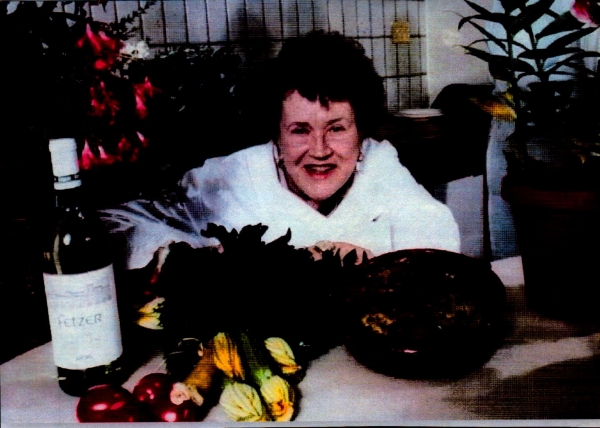
Remembrance of Food Past:
The Four Courses of the Apocalypse
by Leo Racicot
One of the glaring ironies of my life consisted of being pals with food goddesses Julia Child and M.F.K. Fisher, and yet not knowing how to make anything other than a peanut butter sandwich. My friends used to tease that, “Leo could burn boiling water if you don’t keep an eye on him.” When I was a kid, my poor mother, who often claimed I was her ticket to sainthood, would prepare the evening meal for my father, my sister, Diane and herself, and a lonely hamburger on a back burner of the stove for me because other than it and the peanut butter and bread, I refused to so much as look at any other kind of food. “This isn’t a restaurant,” my mother would say, but I was willful, wanted my burger and nothing else. So, in later years, it was of particular surprise to many, and especially to me, when I became a private cook to two former members of the Roosevelt administration, Hilda and Francis Shea, their son, Richard, and their live-in staff of 15 to 20 men.

Julia Child in her kitchen in 1997 (R).
I can boast a little bit now that I am quite the accomplished cook – I whip up a mean jambalaya and can flambé and sauté with the best of ‘em. But I did myself at the time no good throwing the names Fisher and Child around because that made Ms. Shea assume that I, too, knew how to cook. “Oh, Leo. Do you know how to make a Sauce Soubise?” she intoned, summoning up her most aristocratic accent. “Suuuuu-beeeeeze??” I said I did not and reminded her she had hired me to be Richard’s companion/caregiver. It led anyway to the dread question, “Well, did you ever take Chemistry 101 in school?” “Sure,” I said. I was then led by the nose over to shelves heavy with cookbooks of every decade and design, names so dear to me now but which instilled instant quivering in my spine when I first laid eyes on them: some vintage such as Michael Field’s Culinary Classics and Improvisations, and of course, the twin bibles of every serious kitchen: Irma Rombauer’s The Joy of Cooking and Julia’s Mastering the Art of French Cooking, and some quirky, even strange cookbooks such as Cook It Ahead, Live High on Low Fat, John Thorne’s Outlaw Cook, Only Kosher Cooking Matters, The Zodiac Cook Book. Ms. Shea waved her hand à la Vanna White showcasing letters of the alphabet and said, “Well, this is just like Chemistry 101, only with food.” She showed me where the apron was and left me to my folly.
|
|























